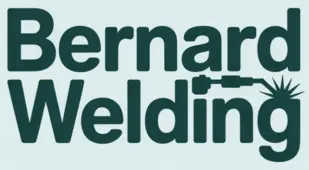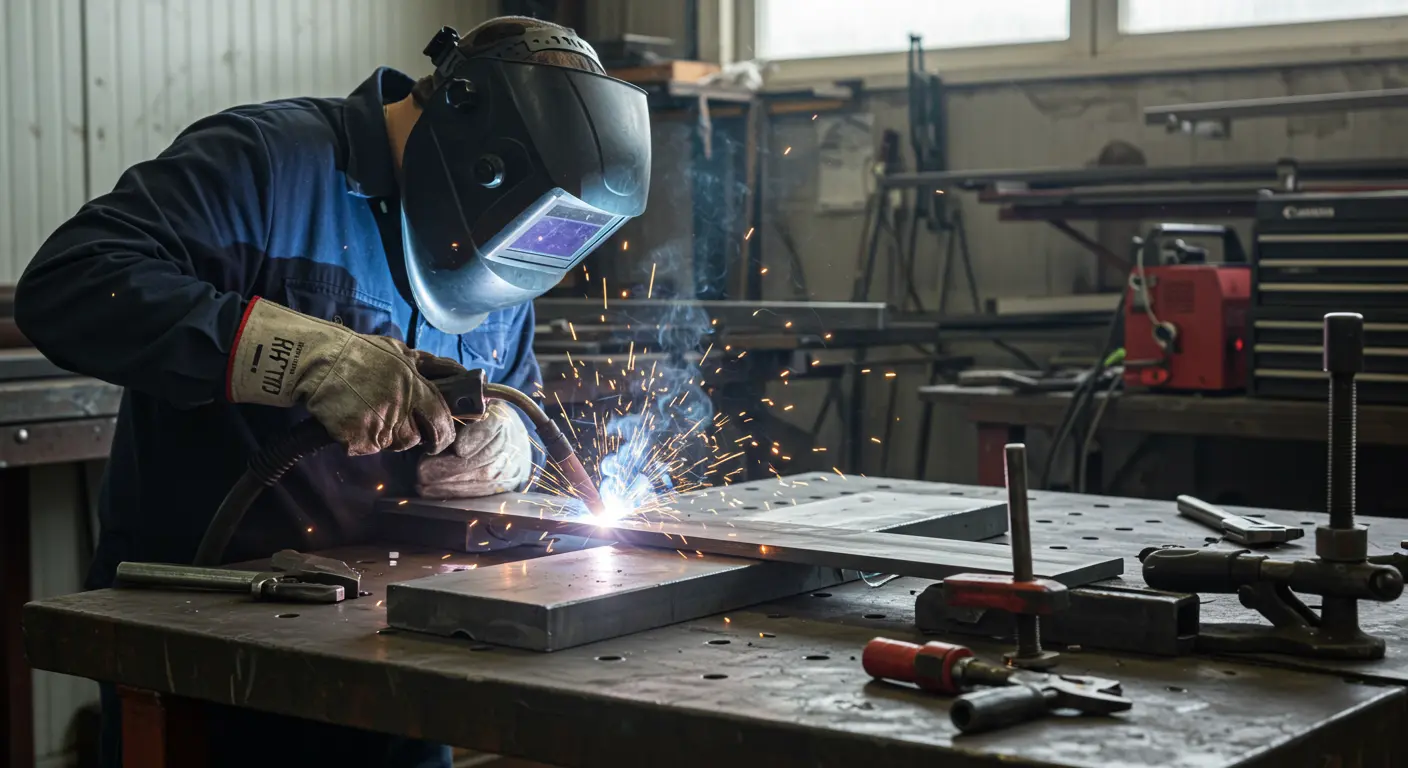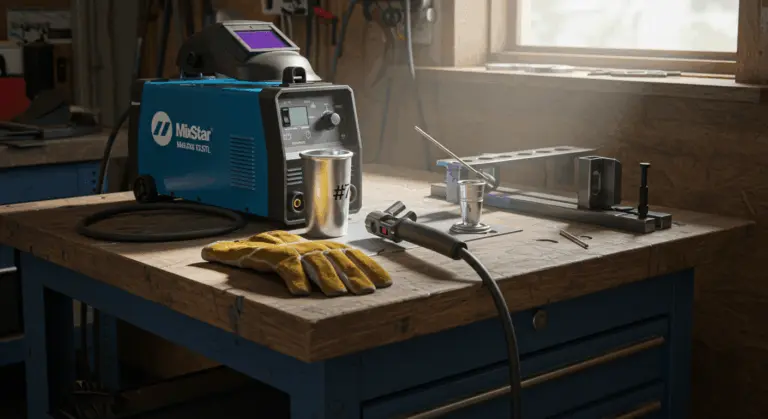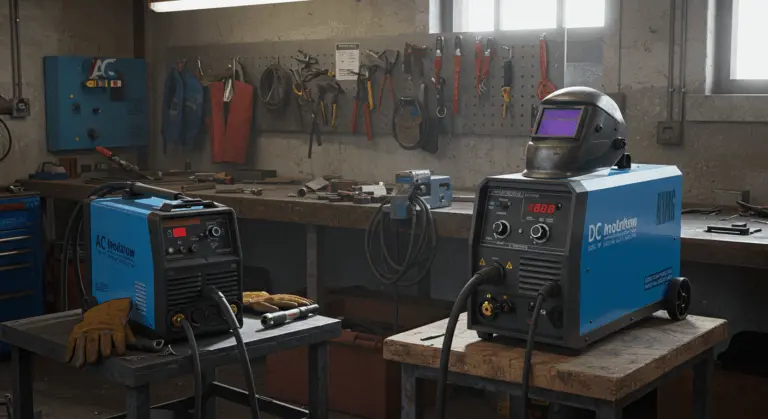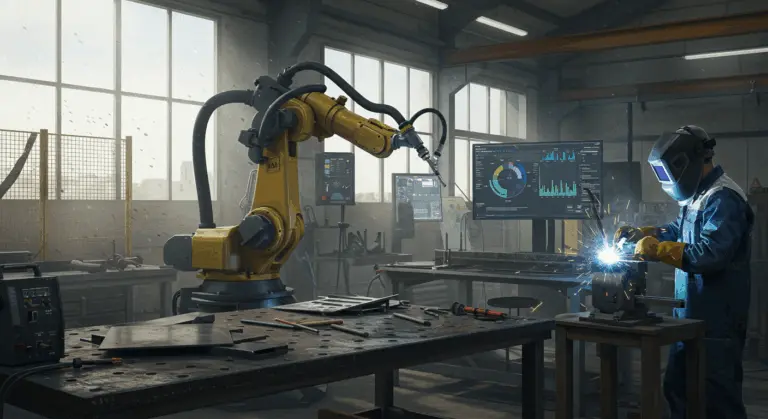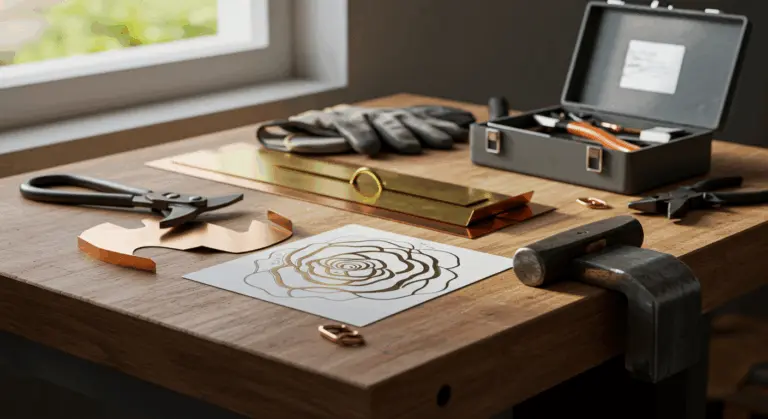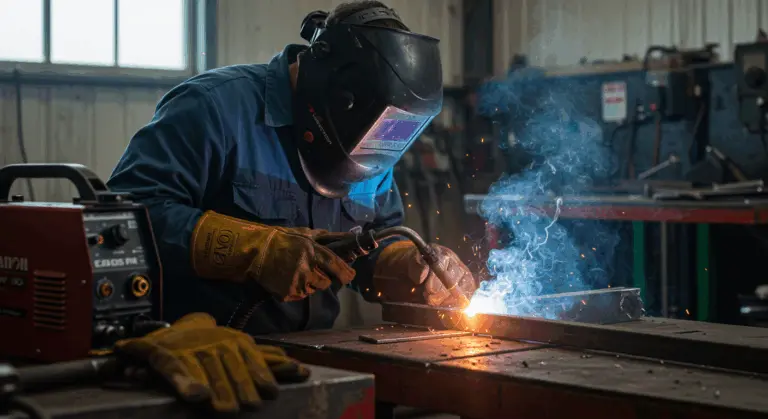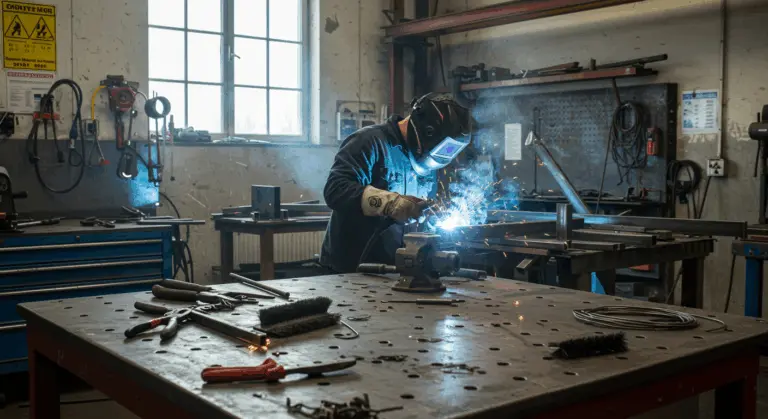What Is A Butt Weld?
A butt weld represents one of welding’s most fundamental joints—created by positioning two metal pieces end-to-end and fusing them precisely where they meet. Unlike overlapping configurations, these workpieces unite within the same plane, forming a clean, streamlined connection. This simplicity has made it essential to structural fabrication and piping systems worldwide.
When done correctly, a butt weld transforms two separate pieces into a single, continuous entity with remarkable strength. This technique proves indispensable in applications demanding smooth, uniform surfaces or where the joint must maintain the full structural integrity of the base material.
Why Is Butt Welding Easy?
Butt welding earns its reputation as one of welding’s more approachable techniques for several practical reasons. Gravity becomes your ally—when working in the flat position, molten metal naturally flows into the joint, practically ensuring proper fusion. Most butt joints present parallel, flat geometries that are refreshingly straightforward compared to their more complex counterparts.
The process is straightforward. You’re welding on top of the joint without wrestling with complex angles or navigating tight corners. This allows welders to maintain recommended heat input without reducing amperage, creating a process that’s both swift and efficient. Less preparation time? Often, yes.
Visual inspection adds another layer of appeal to butt welding. The weld bead sits clearly visible on the surface, making defects or inconsistencies immediately apparent. This visibility has established butt welds’ popularity across diverse industries—from automotive assembly lines to sprawling pipeline networks.
Types Of Butt Joint
Butt joints manifest in various configurations, each engineered for specific applications and material thicknesses. These variations typically derive their names from their distinctive edge preparation shapes—a design choice that directly influences weld strength, penetration depth, and filler material requirements.
The most common types include:
-
Square butt joints: The simplest form with straight, unbeveled edges.
-
Single and double bevel joints: One or both edges are cut at an angle.
-
Single and double V-joints: Symmetrical bevels form a V-shape.
-
Single and double J-joints: One edge is curved into a J-shape.
-
Single and double U-joints: A U-shaped groove is cut into one or both edges.
Each joint type serves distinct purposes, determined by material thickness, strength requirements, and welding position. Square butt joints excel with thinner materials, while V-grooves deliver superior penetration for substantial thicknesses. This choice affects the entire welding process—affecting pass count, filler metal consumption, and ultimate joint strength.
Square Butt Joints
Square butt joints embody simplicity in welding—two metal pieces with straight, unbeveled edges aligned and fused together. They work well with materials up to 3/16 inch (approximately 5mm) thick. The preparation? Refreshingly straightforward. Cut the edges square, position with a small gap, and you’re ready.
Creating a square butt joint requires maintaining roughly a 1/8 inch (3mm) gap between pieces. This gap isn’t arbitrary—it’s crucial for proper penetration, allowing molten metal to reach through the material’s entire thickness. Skip this gap, and you risk incomplete fusion. The joint’s strength suffers.
Square butt joints offer clear advantages: minimal edge preparation, reduced filler metal consumption, and faster welding times. However, limitations exist. They’re unsuitable for thicker materials requiring deeper penetration. Beyond 3/16 inch, beveled or grooved alternatives become necessary to ensure complete fusion throughout the material’s thickness.
Groove Butt Welding Joints
Groove butt welding joints tackle the challenge of joining thicker materials where simple square butt joints fall short. This approach involves creating a root opening by beveling or grooving the material edges—effectively reducing thickness at the joint interface while providing space for weld metal penetration.
Common groove configurations exist, each with specific advantages:
-
Single Bevel: One edge is beveled at an angle.
-
Double Bevel: Both edges are beveled, creating a symmetrical joint.
-
Single/Double J-Groove: A curved J-shaped groove on one or both edges.
-
Single/Double V-Groove: V-shaped preparations on one or both edges.
-
U-Groove: Concave, U-shaped edges.
Groove joints excel at enabling complete penetration through substantial material thicknesses while controlling filler metal requirements. For example: a double V groove consumes less filler metal than a single V groove of identical thickness. Additionally, groove joints distribute heat more evenly during welding, minimizing distortion. The trade-off? They demand precise edge preparation and often require multiple welding passes, making them more time-intensive and technically challenging than their square counterparts.
Butt Welding Symbols
Butt welding symbols serve as standardized graphical shorthand on engineering drawings, communicating precise weld specifications for joints. These symbols eliminate ambiguity between designers, engineers, and welders—a critical function in professional fabrication.
The symbol system employs lines and shapes to indicate different butt joint configurations. A square groove butt weld appears as two parallel lines. V, J, or U groove welds use symbols that mirror their actual bevel shapes. Symbol positioning relative to a reference line indicates weld location—near side, far side, or both.
Additional specifications—weld size, length, special requirements—integrate seamlessly into the welding symbol system. Understanding these symbols is essential for welders and fabricators interpreting engineering drawings accurately. Misinterpretation can lead to improper welds, potentially causing structural failures or expensive rework. Most industries adhere to standardized welding symbols from organizations like the American Welding Society (AWS), ensuring consistency across projects and companies.
Butt Weld Vs. Fillet Weld
The main difference between butt welds and fillet welds lies in joint geometry and material positioning angles. Butt welds position materials end-to-end within the same plane, creating a 180-degree joint angle. Fillet welds join materials at angles—typically 90 degrees in T-joints or lap joints—with weld deposition at a 45-degree angle.
Butt welds achieve full penetration through the complete material thickness, delivering maximum strength that can equal or surpass the base material itself. This makes them ideal for critical structural applications—pressure vessels, load-bearing structures. Fillet welds, while requiring less preparation, typically achieve limited penetration and may not match this strength level, though they often suffice for many applications.
Both weld types experience distortion from filler metal shrinkage during cooling. Mitigation techniques include pre-heating materials or making successive passes on opposite joint sides. The choice between butt and fillet welds depends on application requirements, material thickness, accessibility, and desired joint strength. Many fabrication projects employ both types strategically, matching each joint’s specific needs.
Butt Welds In Different Positions
Butt welds can be performed in four primary positions, each with a different level of difficulty:
-
1G (Flat Position): The easiest position, where welding is done from above on a horizontal joint, allowing gravity to assist.
-
2G (Horizontal Position): More challenging, this involves welding a vertical joint from the side, requiring control to prevent sagging.
-
3G (Vertical Position): Requires welding up or down a vertical joint, demanding excellent puddle control.
-
4G (Overhead Position): The most difficult position, involving welding a horizontal joint from below, working against gravity.
Butt welds in these varied positions find extensive application across industries—piping systems, automotive manufacturing, energy production, and power generation. The ability to execute butt welds in all positions is a valuable skill for welders, particularly those in field applications where joint orientation cannot always be optimized for welding ease.
Applications Of Butt Welds
Butt welds are used extensively across many industries due to their strength and versatility:
-
Piping and Pipelines: Creating leak-tight connections for transporting fluids and gases.
-
Structural Steel: Connecting beams, columns, and plates in buildings and bridges.
-
Automotive: Assembling vehicle frames and exhaust systems.
-
Shipbuilding: Joining hull plates and other structural components.
-
Aerospace: Connecting critical components where strength and reliability are paramount.
-
Manufacturing: Fabricating pressure vessels, storage tanks, and heat exchangers that require smooth internal surfaces.
Butt welding adapts to various materials—carbon steel, stainless steel, aluminum—making it very versatile for diverse manufacturing needs. The specific butt weld type selection—square butt for medium-thickness metals up to 3/16 inch or groove butt welds for thicker materials—depends on application requirements, material thickness, and desired joint characteristics.
Pros And Cons Of Butt Welds
| Pros | Cons |
|—|—|
| High Strength: Achieves strength equal to or greater than the base material. |Requires Precise Preparation: Edge preparation is more labor-intensive than for other joints. |
| Smooth Finish: The flush surface is easy to machine and finish. |Challenging Access: Some configurations can be difficult to access, requiring special fixtures. |
| Good Distortion Control: Double-sided preparations (e.g., Double-V) minimize distortion. |Time-Consuming for Thick Materials: Requires multiple passes, increasing time and filler metal use. |
| Easy to Inspect: The joint’s internal structure can be thoroughly examined with NDT methods. |Higher Initial Cost: The need for precise preparation and multiple passes can increase costs. |
Conclusion
Butt welds represent a fundamental and reliable joining method, creating robust, continuous connections by positioning materials end-to-end. Their effectiveness is demonstrated through widespread adoption in critical industries—from structural fabrication to aerospace applications.
As welding technology advances, butt welding continues evolving, becoming increasingly efficient and accessible. Its combination of strength, clean finish, and versatility ensures its enduring role as an essential fabrication technique.
Butt Welds Explained FAQ
What is the main difference between a butt weld and other weld types?
A butt weld joins two pieces of material end-to-end in the same plane, while other weld types like fillet welds join materials at angles. Butt welds are designed for full penetration through the entire material thickness.
What materials can be joined using butt welds?
Butt welds can join various materials including carbon steel, stainless steel, aluminum, and many other metals. The technique can be adapted to different materials by adjusting welding parameters and filler metals.
Which butt joint type should I use for thick materials?
For materials thicker than 3/16 inch (5mm), groove butt joints such as V-groove, J-groove, or U-groove are recommended. These provide better penetration and strength than square butt joints for thicker materials.
What welding processes are commonly used for butt welds?
Common processes include SAW (Stick), GMA (MIG), GTA (TIG), FLAW (Flux-Cored), and SAW (Submerged Arc Welding). The choice depends on factors like material type, thickness, and application requirements.
Why are butt welds preferred for pressure vessels and pipelines?
Butt welds provide full penetration and high strength, creating leak-tight joints that can withstand pressure. They also create smooth internal surfaces that don’t restrict flow or create turbulence in fluid systems.
How can I ensure proper penetration in a butt weld?
Proper penetration requires correct joint preparation (including appropriate root gap and bevel angle for thicker materials), suitable welding parameters, and good technique. For critical applications, back-gouging and welding from both sides can ensure complete penetration.
What are the most common defects in butt welds?
Common defects include lack of fusion, incomplete penetration, porosity, undercut, and cracking. These can be prevented through proper joint preparation, appropriate welding parameters, and good welding technique.
